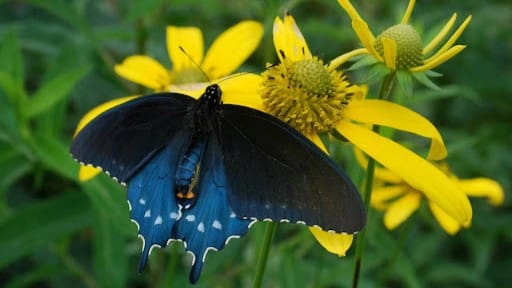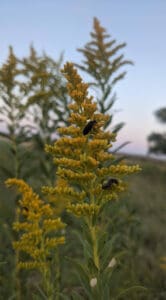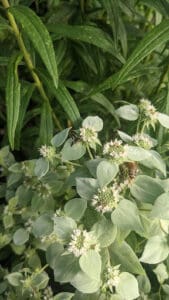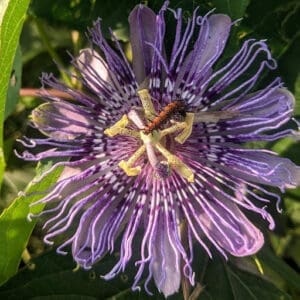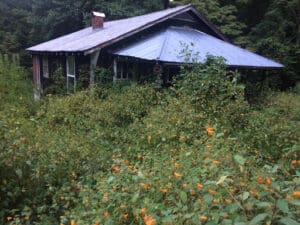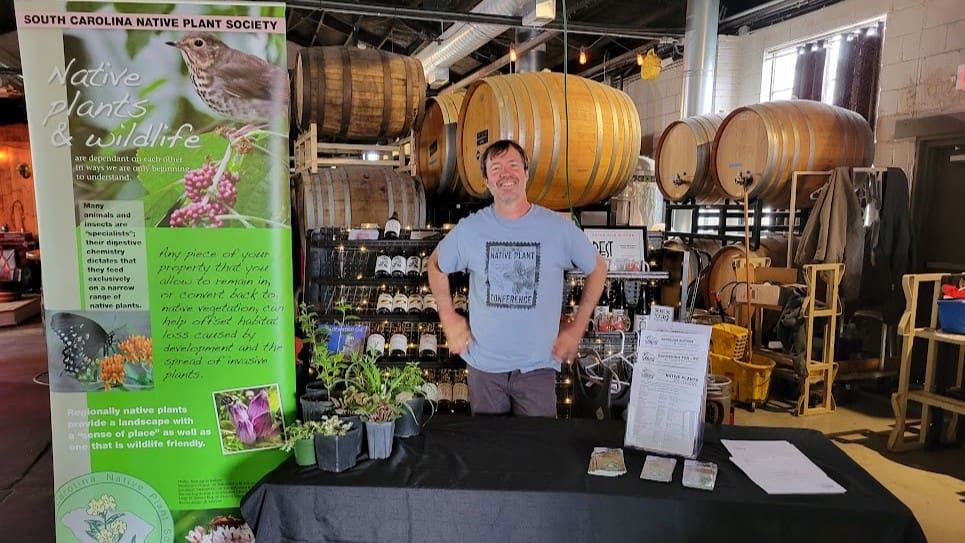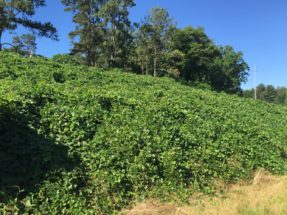by Jeanne Malmgren
Spring is arriving, and for many of us that means it’s time to start the vegetable garden. Have you ever wondered if there’s a way to connect your passion for native plants to that veggie patch in the backyard? The answer is an enthusiastic YES.
Believe it or not, native plants can play an integral part in your kitchen garden—both as helpers and as food themselves. Best of all, many of those specific cultivars will be for sale at our upcoming Upstate Spring Native Plant Sale. So be ready to add to your shopping list!
Last spring, horticulturist Adam Bigelow of Bigelow’s Botanical Excursions gave a great presentation to our Chapter titled “Native Plants for Vegetable Gardens.” If you missed it, you can view a recording, HERE.
Adam talked about the many roles native plants can serve in community with vegetable crops:
Attractants for pollinators and beneficial insects. Some natives bloom early in the season (red maple, golden ragwort, violets), some in midsummer (bee balm, milkweed, native sunflowers), and some are late/fall bloomers (asters, goldenrod, Joe Pye Weed, ironweed). They’ll keep the pollinators visiting your vegetable plot for months on end.
“Trap” crops. Quite a few native perennials can withstand leaf herbivory, luring bad bugs away from your food crops. Examples are evening primrose, which is attractive to Japanese beetles, and short-toothed mountain mint, which is a magnet for lots of insects. Here’s a fruity bonus: When insects munch on blackberry and black-capped raspberry, the plants respond to the stress by going into reproductive mode and producing bigger crops of fruit.
Edibles. So many native species produce edible plant parts that Adam says we should consider them part of our veggie palate. Plants such as American lovage, sourwood, sassafras, and ramps produce edible greens used to make “spring tonics.” We can harvest edible roots from sunchokes, other tuberous sunflowers, and groundnut. We can eat the flowers of violets, redbud, and evening primrose. And of course, many native plants provide us with edible fruits—serviceberry, strawberry, blueberry, mayapple, persimmon, and paw paw—while the leaves of others can be made into healthful teas: teaberry, sassafras, sweet birch, spicebush, and bee balm. Adam’s favorite native edible is the green-headed coneflower (Rudbeckia laciniata). Its leaves produce a tasty green known as “sochan,” which is a favorite spring edible of the Cherokee, Creek, Catawba and other indigenous peoples.
Cut flowers/aesthetic beauty. Why shouldn’t your vegetable garden be pretty? You can add color and texture—and have a steady supply of cut flowers—by growing such natives as cut-leaved coneflower, purple coneflower, mountain mints, blue wild indigo, bee balm, native sunflowers, native grasses, asters, goldenrod, sensitive fern, and pussy willow. Adam’s presentation included a photo of his house in midsummer, with an entire yard of blooming jewelweed, a major attractor of hummingbirds as well as producing edible leaves, flowers, and seeds.
Adam rounded out his talk with a gallery of the natives he most favors in and around his vegetable plot:
- Passionflower (Passiflora incarnata) – edible leaves and fruits, fritillary host plant
- Jewelweed (Impatiens capensis) – edible leaves, flowers, and seeds, hummingbird attractant
- Goldenrod (Solidago spp.) – edible tea, medicinal uses, top attractor of insects
- Common milkweed (Asclepias spp.) – edible, monarch host plant
- St. John’s wort (Hypericum spp.) – medicinal, cut flowers, attracts pollinators
- Asters (Symphyotrichum spp. and Eurybia spp.) – fall flower, pollinator support, nectar for monarch fall migration
- Mountain mint (Pycnanthemum spp.)
- Coneflowers (Rudbeckia spp.)
- Trees such as oak (Quercus spp.) and elder (Sambucus spp.)
Don’t forget: Most all of these will be available for purchase at our Spring Plant Sale next month. Are you ready to round out your vegetable garden with a crop of hard-working natives? Let’s go!

